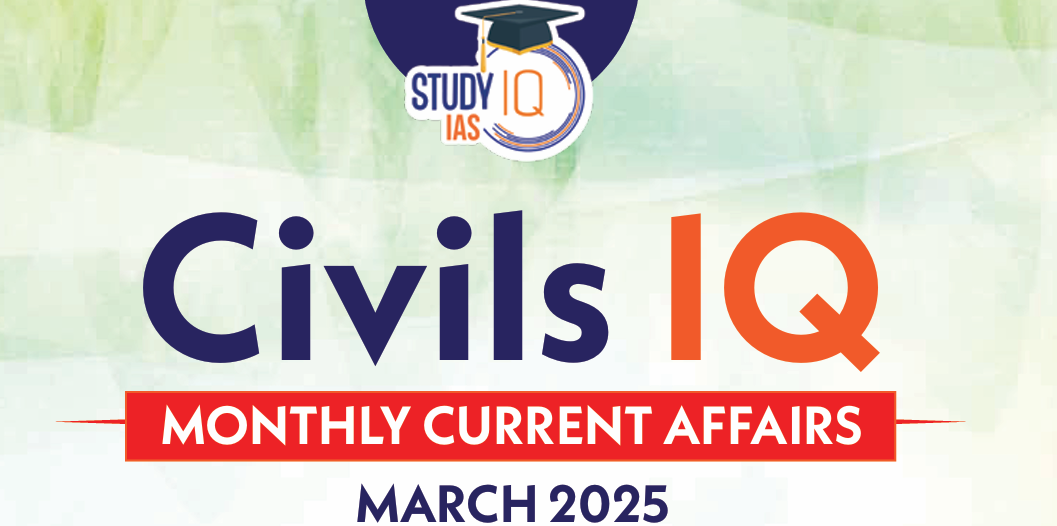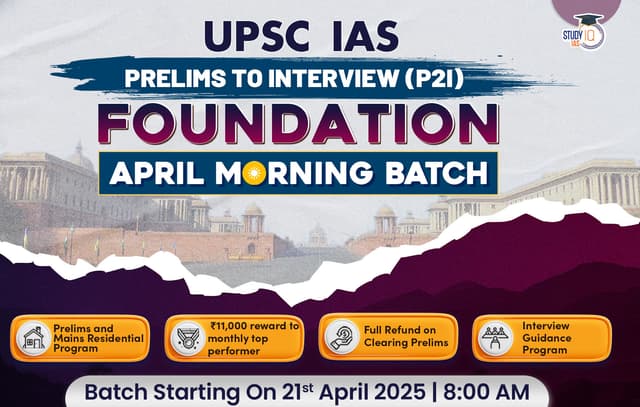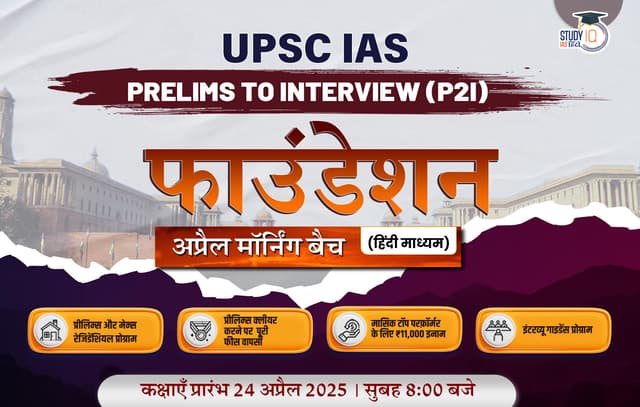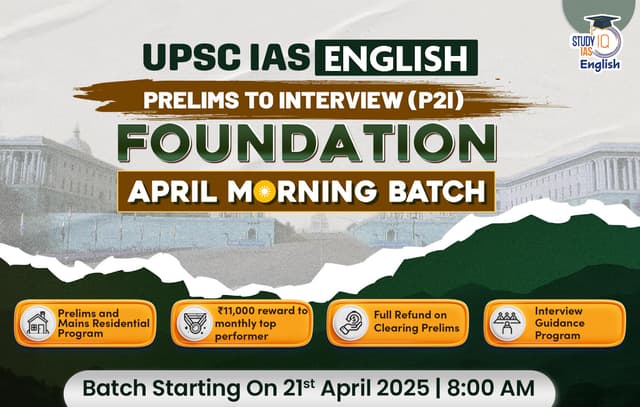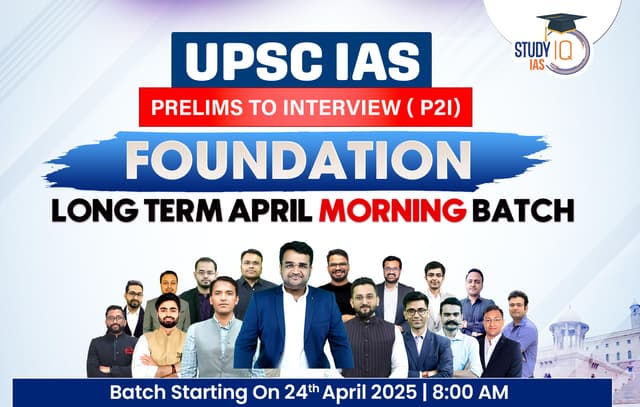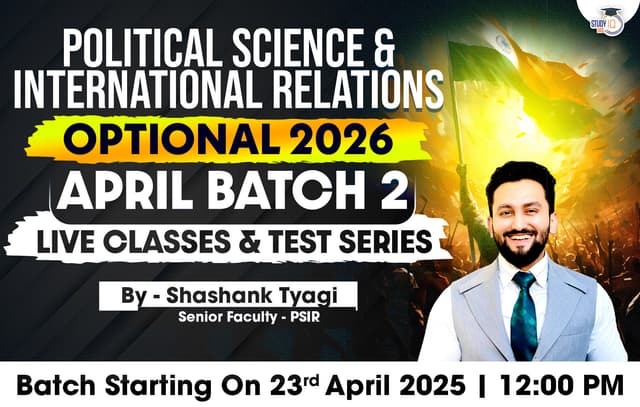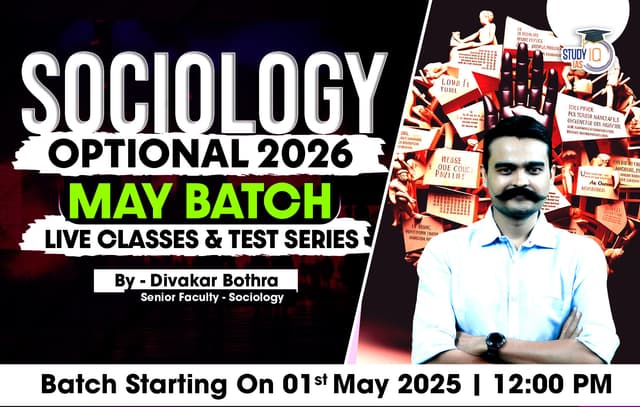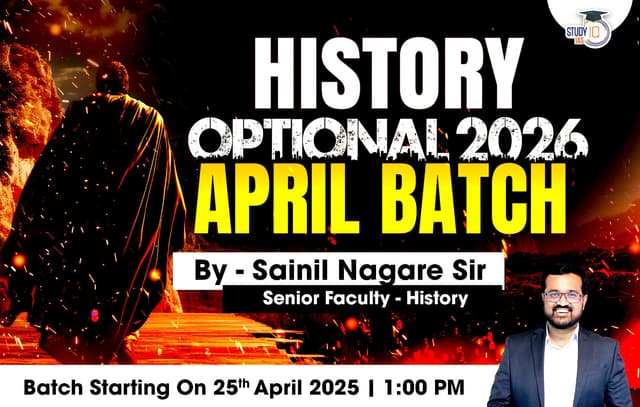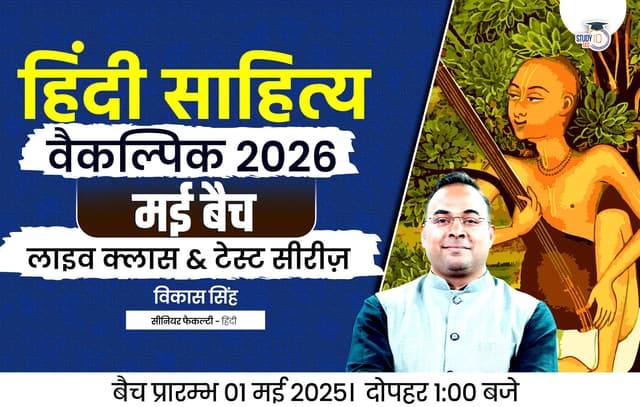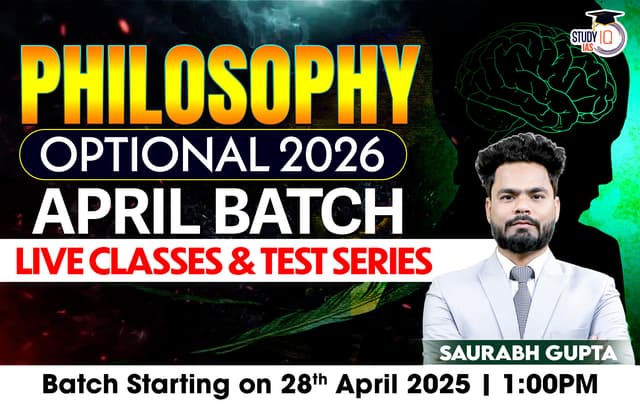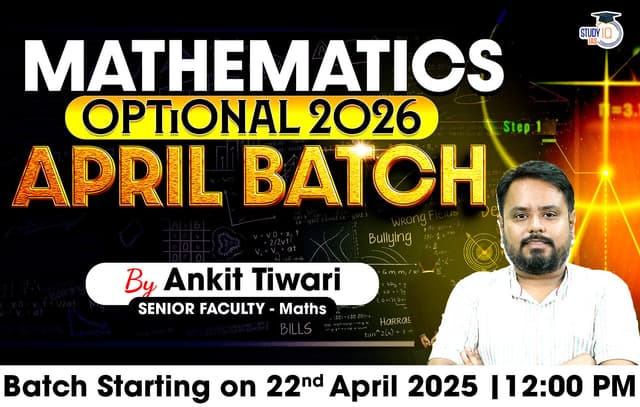The Chhattisgarh Public Service Commission (CGPSC) conducted the State Service Exam (SSE) Prelims on February 9, 2025. The examination was held in two shifts: the first from 10:00 am to 12:00 pm, and the second from 3:00 pm to 5:00 pm. Check Out CGPSC Exam Analysis 2025 Question-wise here.
1. What is the maximum limit of loan at present, provided under the Prime Minister Mudra Yojana?
(A) Rupees 10 Lakh
(B) Rupees 15 Lakh
(C) Rupees 20 Lakh
(D) Rupees 25 Lakh
Ans. (c) Rupees 20 Lakh
Explanation:
The Pradhan Mantri Mudra Yojana (PMMY) provides loans up to ₹20 lakh to micro and small businesses.
To strengthen support for aspiring entrepreneurs, the finance minister announced an increase in the loan limit to ₹20 lakh during the Union Budget 2024-25 on July 23, 2024. This new limit took effect on October 24, 2024.
2. A group of individual organism with fundamental similarities is called as a
(A) Family
(B) Species
(C) Genus
(D) Order
Ans. (B) Species
Explanation:
The biological classification system organizes living organisms into a hierarchical structure. Here’s how the options relate:
- Species: A species is a group of individuals that can interbreed and produce fertile offspring. They share fundamental similarities in their characteristics. This is the most specific level of classification.
- Genus: A genus is a group of related species. For example, Panthera leo (lion) and Panthera tigris (tiger) belong to the same genus Panthera.
- Family: A family is a group of related genera. For example, the genus Panthera (cats) belongs to the family Felidae.
- Order: An order is a group of related families. For example, Felidae (cats) belongs to the order Carnivora.
Therefore, the most specific grouping of organisms with fundamental similarities is a species.
3. The Eastern and the Western Ghats meet each other at
(A) Kaimur ranges
(B) Vindhyan ranges
(C) Nilgiri hills
(D) Rajmahal hills
Ans. (C) Nilgiri hills
Explanation:
The Eastern and Western Ghats are mountain ranges that run along the eastern and western coasts of India, respectively. They converge at the Nilgiri Hills, a mountain range located in the southern part of India. This meeting point is significant for its biodiversity.
4. Maximum Diversity of species is found at
(A) Temperate region
(B) Tropical region
(C) Polar region
(D) None of the above
Ans. (B) Tropical region
Explanation:
Tropical regions, located near the equator, experience warm temperatures, high humidity, and abundant rainfall. These conditions create a favorable environment for a wide variety of plant and animal species to thrive. The greater availability of resources and stable climate contribute to higher biodiversity in tropical regions compared to temperate or polar regions.
5. Scientific name of Leopard?
(A) Panthera leo
(B) Panthera pardus
(C) Panthera tigris
(D) Panthera uncia
Ans. (B) Panthera pardus
Explanation:
- Panthera leo is the scientific name for a lion.
- Panthera pardus is the scientific name for a leopard.
- Panthera tigris is the scientific name for a tiger.
- Panthera uncia is the scientific name for a snow leopard.
The scientific name of an organism is a binomial nomenclature consisting of the genus and species. This standardized naming system is used worldwide to avoid confusion and ensure clear communication about different species.
6. As per the Economic Survey 2022-23, which of the following commodities has the highest percent share in the export from India in the financial year 2021-22?
(A) Agriculture and allied products
(B) Crude oil and petroleum products
(C) Manufactured goods
(D) Ore and minerals
Ans. (C) Manufactured goods
Explanation:
While India exports a variety of goods, including agricultural products, petroleum products, and minerals, manufactured goods constitute the largest share of its exports. This category includes a wide range of products such as textiles, engineering goods, chemicals, pharmaceuticals, and gems and jewelry. The Economic Survey of India provides detailed data on the composition of India’s exports, and for the financial year 2021-22, manufactured goods held the highest share.
Read more: Economic Survey 2023 Highlights, Complete Analysis
7. By which of the following names is “Gandhara” style known?
(A) Indo Persian Art
(B) Indo Greek Art
(C) Indo Chinese Art
(D) Indo European Art
Ans. (B) Indo-Greek Art
Explanation:
The Gandhara school of art flourished in the region of Gandhara, which corresponds to present-day northwestern Pakistan and eastern Afghanistan, from around the 1st century BCE to the 5th century CE. It is also known as Indo-Greek art because it was heavily influenced by Hellenistic (Greek) art styles that spread to the region following Alexander the Great’s conquests. The Gandhara style is characterized by its realistic depictions of the Buddha and other figures, often with features and drapery influenced by Greek sculpture.
Read more: Gandhara and Mathura Schools
8. Which of the following Articles is called the “Heart and Soul” of the Indian Constitution?
(A) Article 32
(B) Article 14
(C) Article 15
(D) Article 19
Ans. (A) Article 32
Explanation:
Article 32 of the Indian Constitution guarantees the right to constitutional remedies. It empowers individuals to move the Supreme Court for the enforcement of their fundamental rights. Dr. B.R. Ambedkar, the chairman of the drafting committee of the Constitution, referred to Article 32 as the “heart and soul” of the Constitution because it provides a mechanism for protecting and upholding all other fundamental rights. Without this right, the other rights would be meaningless, as there would be no effective way to enforce them.
9. With reference to the “ANNA DARPAN” project, consider the following statements.
(a) It is initiated by the Ministry of Agriculture and Farmer’s Welfare Government of India.
(b) Its objective is to modernise the Supply Chain Management System.
(c) It is also known as ‘Depot Online system’.
(d) It will not cover its operations at Mandis, Mills and Depots (both owned and hired) as well as divisional, regional, zonal and headquarters levels.
Which of the statement/s given above is/are correct?
(A) Only (a), (b) and (d)
(B) Only (b) and (c)
(C) Only (a), (c) and (d)
(D) None of the above
Ans. (B) Only (b) and (c)
Explanation:
- (a) It is initiated by the Ministry of Agriculture and Farmer’s Welfare, Government of India. This statement is incorrect. While related to food and distribution, ANNA DARPAN is primarily associated with the Department of Food and Public Distribution, under the Ministry of Consumer Affairs, Food & Public Distribution, not directly the Ministry of Agriculture.
- (b) Its objective is to modernize the Supply Chain Management System. This is correct. ANNA DARPAN aims to digitize and improve the efficiency of the food grain supply chain.
- (c) It is also known as ‘Depot Online System’. This is also correct. The project is often referred to as the Depot Online System as it involves the digitalization of depot operations.
- (d) It will not cover its operations at Mandis, Mills and Depots (both owned and hired) as well as divisional, regional, zonal and headquarters levels. This is incorrect. ANNA DARPAN aims to integrate and cover operations across various levels, including mandis, mills, depots (both owned and hired), and up to the headquarters level, to create a comprehensive digital record and improve transparency and efficiency.
10. The dimension of dielectric constant is
(A) MOLOTO
(B) MLOT
(C) MLTo
(D) MOLOT
Ans. (A) M⁰L⁰T⁰
Explanation:
The dielectric constant (ε), also known as relative permittivity, is a dimensionless quantity. It represents the ratio of the permittivity of a medium to the permittivity of free space. Since it’s a ratio of two permittivities (which have the same units), the dimensions cancel out, resulting in a dimensionless quantity. Therefore, its dimensions are M⁰L⁰T⁰.
11. Where is Devnimori Stupa situated?
(A) Andhra Pradesh
(B) Chhattisgarh
(C) Rajasthan
(D) Gujarat
Ans. (D) Gujarat
Explanation:
The Devnimori Stupa, an important Buddhist archaeological site, is located in the Aravali range near the village of Devnimori in the Sabarkantha district of Gujarat, India. It’s known for its significant archaeological finds, including relics of the Buddha and intricate carvings.
12. ‘PM-AASHA’ Scheme is related to the welfare of
(A) Women
(B) Disabled
(C) Farmer
(D) Student
Ans. (C) Farmer
Explanation:
PM-AASHA (Pradhan Mantri Annadata Aay Sanrakshan Abhiyan) is a comprehensive scheme launched by the Indian government to ensure a fair and remunerative price for farmers’ produce. It aims to address the issue of price volatility and provide a safety net for farmers. The scheme involves various mechanisms for procurement and price support.
13. Which of the following is not a tribe of the middle Indian region?
(A) Baigas
(B) Kadars
(C) Muria
(D) Kharia
Ans. (B) Kadars
Explanation:
- Baigas, Murias, and Kharias are all recognized tribes found in the central Indian region, particularly in states like Madhya Pradesh, Chhattisgarh, and Jharkhand.
- Kadars are a Particularly Vulnerable Tribal Group (PVTG) primarily found in the southern Indian state of Kerala. They are known for their traditional forest-dwelling lifestyle.
14. Which among the following pair is an example of paramagnetic and ferromagnetic substances?
(A) H₂O and Fe
(B) Cu²+ and Gd
(C) Cr3+ and MnO
(D) Fe and Cu2+
Ans. (B) Cu²⁺ and Gd
Explanation:
- Paramagnetic substances are weakly attracted to a magnetic field and lose their magnetism when the field is removed. They have unpaired electrons, but the spins are randomly oriented. Cu²⁺ (copper ion) is a paramagnetic substance.
- Ferromagnetic substances are strongly attracted to a magnetic field and retain their magnetism even after the field is removed. They have unpaired electrons whose spins align, creating a strong magnetic moment. Gd (Gadolinium) is a ferromagnetic substance (at room temperature; it becomes paramagnetic above its Curie point).
Reason for why the other options are incorrect:
- (A) H₂O and Fe: H₂O (water) is diamagnetic (repelled by a magnetic field), and Fe (iron) is ferromagnetic.
- (C) Cr³⁺ and MnO: Cr³⁺ (chromium ion) is paramagnetic, but MnO (manganese oxide) is antiferromagnetic, not ferromagnetic. Antiferromagnetic materials have opposing spins that cancel each other out, resulting in no net magnetization.
- (D) Fe and Cu²⁺: Fe (iron) is ferromagnetic, and Cu²⁺ (copper ion) is paramagnetic. The order is reversed from what the question asks.
15. The two great leaders of the revolution of 1857, who escaped to Nepal?
(A) Nana Saheb and Begum Zeenat Mahal
(B) Kunwar Singh and Nana Saheb
(C) Prince Firoz Shah and Begum Hazrat Mahal
(D) Nana Saheb and Begum Hazrat Mahal
Ans. (D) Nana Saheb and Begum Hazrat Mahal
Explanation:
Nana Saheb, a prominent leader of the 1857 revolt, and Begum Hazrat Mahal, the regent of Awadh, both escaped to Nepal after the suppression of the uprising by the British. They sought refuge there but their later fates are somewhat unclear.
16. Ahar or Banas culture was a contemporary of which culture?
(A) Harappa culture
(B) Mughal period culture
(C) Mauryan period culture
(D) Gupta period culture
Ans. (A) Harappa culture
Explanation:
The Ahar-Banas culture, a Chalcolithic (copper-stone age) culture, flourished in the Mewar region of Rajasthan, India. Archaeological evidence suggests that it was contemporary with the Harappan civilization, although it was a distinct and separate culture. Both cultures existed during the same general time period (the Bronze Age), but in different geographical areas.
17. Who was the first Deputy Prime Minister of India?
(A) Sri Morarji Desai
(B) Sri Jagjivan Ram
(C) Chaudhary Charan Singh
(D) Sardar Vallabhbhai Patel
Ans. (D) Sardar Vallabhbhai Patel
Explanation:
Sardar Vallabhbhai Patel served as the first Deputy Prime Minister of India. He played a crucial role in the integration of princely states into the Indian Union and is remembered for his significant contributions to the nation’s early years.
18. With reference to the Asia-Pacific Deaf Games 2024 held at Kuala Lumpur, consider the following statements.
(a) It was 11th (Eleventh) Asia-Pacific Deaf Games.
(b) India received 5th (Fifth) rank in it.
(c) Indian team bagged 8 Gold, 18 Silver and 29 Bronze medal in it.
(d) India did not participated in this games.
Which of the statement/s given above is/are correct?
(A) only (a) and (b)
(B) only (b) and (c)
(C) only (a) and (c)
(D) only (d)
Ans. (B) only (b) and (c)
Explanation:
- (a) It was the 11th Asia-Pacific Deaf Games. This is incorrect. The 10th Asia-Pacific Deaf Games were held in Kuala Lumpur, Malaysia from December 1–8, 2024.
- (b) India received 5th rank in it. This is correct. Indian athletes showcased their resilience and talent at the 2024 Asia Pacific Deaf Games held in Kuala Lumpur, Malaysia. The contingent delivered a stellar performance, securing 55 medals and finishing fifth on the medal tally.
- (c) The Indian team bagged 8 Gold, 18 Silver, and 29 Bronze medals in it. This is generally correct, though it’s always best to double-check medal counts from official sources. India had a strong showing and this medal tally is approximately right.
- (d) India did not participate in these games. This is incorrect. India did participate and had a notable presence.
19. A Minister who for any period of six (6) consecutive months is not a member of either House of Parliament shall cease to be a Minister after the expiry of this period. This is mentioned in which Article of the Constitution?
(A) Article 75(5)
(B) Article 75(3)
(C) Article 75(4)
(D) Article 75(2)
Ans. (A) Article 75(5)
Explanation:
Article 75 of the Indian Constitution deals with the appointment, tenure, and responsibilities of ministers. Clause (5) of this article specifically addresses the situation where a person is appointed as a minister without being a member of either House of Parliament. It states that such a person must become a member of either the Lok Sabha or the Rajya Sabha within six months of their appointment, failing which they cease to be a minister.
20. Green Plants in Ecosystem are
(A) Primary Producer
(B) Primary Consumer
(C) Secondary Consumer
(D) Decomposer
Ans. (A) Primary Producer
Explanation:
In an ecosystem, green plants are classified as primary producers. This is because they have the unique ability to convert sunlight, water, and carbon dioxide into food (sugars) through the process of photosynthesis. This food provides energy not only for the plants themselves but also for all other organisms in the ecosystem, either directly (by eating plants) or indirectly (by eating organisms that have eaten plants). They form the base of the food chain.
21. Who among the following travelers visited the court of Vijayanagara ruler Devraya II as a Persian Ambassador?
(A) Barbosa
(B) Nicolo-de-Conti
(C) Afanasy Nikitin
(D) Abdur Razzaq
Ans. (D) Abdur Razzaq
Explanation:
Abdur Razzaq was a Persian diplomat and historian who visited the Vijayanagara court during the reign of Devraya II in the 15th century. He served as an ambassador from the Timurid dynasty of Persia. His accounts provide valuable insights into the political, social, and economic conditions of the Vijayanagara Empire.
22. Which of the following memory of the computer is used to speed up computer processing?
(A) Cache memory
(B) RAM
(C) ROM
(D) None of the above
Ans. (A) Cache memory
Explanation:
Cache memory is a small, fast memory that stores frequently accessed data and instructions. It acts as a buffer between the CPU and the main memory (RAM). When the CPU needs data, it first checks the cache. If the data is present in the cache (a “cache hit”), the CPU can access it much faster than retrieving it from RAM. This significantly speeds up processing.
23. Which of the following Himalayan peaks is not situated in India?
(A) Kamet
(B) Dhaulagiri
(C) Namcha Barwa
(D) Nanga Parbat
Ans. (B) Dhaulagiri
Explanation:
- Kamet, Namcha Barwa, and Nanga Parbat are all located in the Himalayas, but within India.
- Dhaulagiri is a mountain massif in the Himalayas, but it is located entirely within Nepal.
24. Whose composition is “Natyashastra”?
(A) Vishwanath
(B) Bhamah
(C) Bharatamuni
(D) Bhavbhuti
Ans. (C) Bharatamuni
Explanation:
The Natyashastra is an ancient Sanskrit treatise on performing arts, encompassing drama, dance, music, and other related arts. It is attributed to the sage Bharatamuni and is considered a foundational text in Indian aesthetics and dramaturgy.
25. On the basis of the Chelliah Committee’s recommendations, in which of the following fields were reforms initiated?
(A) Monetary Policy
(B) Trade Policy
(C) Foreign Exchange Policy
(D) Tax Policy
Ans. (D) Tax Policy
Explanation:
The Chelliah Committee, headed by Raja Chelliah, was a significant committee appointed by the Indian government to study and recommend reforms in the tax system. Its recommendations led to major changes in India’s tax structure, including rationalization of tax rates, simplification of procedures, and measures to improve tax compliance.
26. Under which Article of the Indian Constitution, the Governor reserves a Bill passed by the State Legislature for President’s consideration?
(A) Article 199
(B) Article 200
(C) Article 201
(D) Article 356
Ans. (B) Article 200
Explanation:
Article 200 of the Indian Constitution deals with the Governor’s assent to bills passed by the State Legislature. It states that the Governor may assent to a bill, withhold assent, or reserve the bill for the President’s consideration. This article specifically empowers the Governor to reserve bills for the President, allowing the central government to have a say in matters of national importance or where there might be conflicts between state and central laws.
27. Who among the following is not a member of the high-level committee constituted on simultaneous elections?
(A) Dr. Niten Chandra
(B) Dr. Subhash C. Kashyap
(C) Sri Tushar Mehta
(D) Sri N.K. Singh
Ans. (A) Dr. Niten Chandra
Explanation:
A high-level committee was formed to examine the feasibility of holding simultaneous elections in India. While the exact composition of such committees can vary, based on available information, Dr. Niten Chandra has not been widely associated with this particular committee. Dr. Subhash C. Kashyap, Sri Tushar Mehta, and Sri N.K. Singh are individuals who have been mentioned in connection with discussions and reports related to simultaneous elections. It’s crucial to consult official government sources for the most up-to-date and accurate committee membership details.
28. The Central Government in its Union Budget 2023-24 adopted seven priorities of the Government; these 7 priorities are named as-
(A) Saptadev
(B) Saptarishi
(C) Saat Vachan
(D) Saptadwar
Ans. (B) Saptarishi
Explanation:
In the Union Budget 2023-24, the Finance Minister outlined seven priorities for the government. These priorities were collectively referred to as “Saptarishi,” drawing a parallel to the seven ancient sages. These priorities covered areas like inclusive development, reaching the last mile, infrastructure and investment, unleashing the potential of human capital, innovation and research and development, and green growth.
29. Which of the following films won the 96th Academy Award 2024 in the best picture category?
(A) The Holdovers
(B) Barbie
(C) Oppenheimer
(D) Anatomy of a Fall
Ans. (C) Oppenheimer
Explanation:
Oppenheimer won the award for Best Picture at the 96th Academy Awards.
30. Which of the following Constitutional Amendments restricts the total number of Ministers, including the Prime Minister, in the Council of Ministers shall not exceed fifteen percent of the total number of members of the House of the People?
(A) 86th Amendment
(B) 52nd Amendment
(C) 91st Amendment
(D) 73rd Amendment
Ans. (C) 91st Amendment
Explanation:
The 91st Amendment to the Indian Constitution, enacted in 2003, introduced several changes, including the restriction on the size of the Council of Ministers. It limited the number of ministers, including the Prime Minister, to 15% of the total membership of the Lok Sabha (House of the People).
31. In the Nyaya Philosophy, the synonym of Knowledge is-
(A) Cognition
(B) Apprehension
(C) Both (A) and (B)
(D) None of the above
Ans. (C) Both (A) and (B)
Explanation:
In Nyaya philosophy, both “Cognition” and “Apprehension” are used as synonyms for knowledge. While there might be subtle nuances in their usage in specific contexts, they both generally refer to the understanding or awareness of something. Nyaya, one of the six orthodox schools of Hindu philosophy, places great emphasis on pramana (valid means of knowledge) and the process of acquiring correct knowledge.
32. Who among the following was conferred with the title of ‘Jagat guru’ by Akbar?
(A) Jinchandra Suri
(B) Hir Vijay Suri
(C) Shanti Chandra
(D) Birbal
Ans. (B) Hir Vijay Suri
Explanation:
Hir Vijay Suri, a prominent Jain monk, was bestowed with the title of “Jagat Guru” (World Teacher) by Emperor Akbar. Akbar was known for his religious tolerance and respect for different faiths. He held Hir Vijay Suri in high regard and was impressed by his knowledge and wisdom.
33. Who has said that ‘Conscious body is the soul’?
(A) Nagarjuna
(B) Charvak
(C) Mimamsa
(D) Asang
Ans. (B) Charvak
Explanation:
The Charvaka school of philosophy, also known as Lokayata, was a materialistic and skeptical school of thought in ancient India. They rejected the idea of a separate, eternal soul and believed that consciousness arises from the combination of material elements that make up the body. When the body dies, consciousness ceases to exist, according to Charvaka philosophy.
34. In India, the classification of cities based on the size of the population is in how many categories?
(A) 03
(B) 04
(C) 05
(D) 06
Ans. (D) 06
Explanation:
The Census of India classifies urban settlements into six categories based on population size:
- Metropolitan City: Population of 1 million (10 lakh) and above.
- City: Population between 100,000 and 999,999.
- Town: Population between 20,000 and 99,999.
- Census Town: A settlement with urban characteristics but not formally notified as a town. Criteria include a population of 5,000 or more, at least 75% of the male working population engaged in non-agricultural activities, and a density of population of at least 400 persons per sq. km.
- Outgrowth: A well-defined urban growth contiguous with a town.
- Urban Agglomeration: A continuous urban spread constituting a town and its adjoining urban outgrowths, or two or more towns with their outgrowths.
35. Who is the founder of the “Indian Statistical Institute”?
(A) V. K. R. V. Rao
(B) Prof. Raj Krishna
(C) P. C. Mahalanobis
(D) D. T. Lakdawala
Ans. (C) P. C. Mahalanobis
Explanation:
Prasanta Chandra Mahalanobis, a renowned statistician, founded the Indian Statistical Institute (ISI) in Kolkata in 1931. The ISI is a prestigious institution dedicated to research, teaching, and the application of statistics. Mahalanobis is also known for developing the Mahalanobis distance, a statistical measure.
36. The Ministry of Tribal Affairs in India was established in the year-
(A) 1991
(B) 1995
(C) 1999
(D) 2001
Ans. (C) 1999
Explanation:
The Ministry of Tribal Affairs was set up in 1999. It was created by bifurcating the Ministry of Social Justice and Empowerment with the aim of providing a more focused approach to the development and welfare of tribal communities in India.
37. What are Residuary subjects?
(A) Subjects included in the State list
(B) Subjects included in the Concurrent list
(C) Subjects not included in any list
(D) Subjects included in the Union list
Ans. (C) Subjects not included in any list
Explanation:
In the Indian Constitution, the distribution of legislative powers between the Union (central government) and the States is done through three lists: the Union List, the State List, and the Concurrent List. However, there may be certain subjects that are not explicitly mentioned in any of these lists. These subjects are called “residuary subjects,” and the power to legislate on them rests with the Union Parliament. This is explicitly stated in Article 248 of the Constitution.
38. Match List-I with List-II and select the correct answer using the code given below the lists.
List-1 List-II
(Scheduled Tribe) (Dominating region)
(a) Jarawa (1) Rajasthan
(b) Munda (2) Himachal Pradesh
(c) Bhil (3) Andaman and Nicobar Islands
(d) Gaddi (4) Jharkhand
Code:
(a) (b) (c) (d)
(A) (1) (2) (3) (4)
(B) (2) (1) (4) (3)
(C) (4) (3) (1) (2)
(D) (3) (4) (1) (2)
Ans. (D) (3) (4) (1) (2)
Explanation:
- (a) Jarawa: Jarawas are a Particularly Vulnerable Tribal Group (PVTG) residing in the Andaman and Nicobar Islands.
- (b) Munda: Mundas are a large tribal group primarily found in Jharkhand.
- (c) Bhil: Bhils are one of the largest tribal groups in India, with a significant presence in Rajasthan, among other states.
- (d) Gaddi: Gaddis are a tribal community primarily inhabiting the Himachal Pradesh region.
39. Which one of the following Gupta rulers is referred to as “Lichchavi Dauhitara” (son of the daughter of the Lichchavis)?
(A) Chandragupta – 1
(B) Samudragupta
(C) Chandragupta – II
(D) Skandagupta
Ans. (B) Samudragupta
Explanation:
Samudragupta, a prominent ruler of the Gupta dynasty, was known as “Lichchavi Dauhitara.” This title indicates that his mother, Kumaradevi, was a princess from the Lichchavi clan, an ancient republic in the region. This connection to the Lichchavis added to Samudragupta’s prestige and legitimacy.
40. Which of the following statements are correct regarding National Judicial Appointments Commission?
It consists of
(a) The Chief Justice of India as the Ex-officio Chairperson.
(b) Two other Senior Judges of the Supreme Court next to the Chief Justice of India, as the Ex-officio Members.
(c) The Union Minister of Law and Justice as the Ex-officio Member.
(d) Two eminent persons to be nominated by the Committee consisting of the Prime Minister, A the Chief Justice of India and the Leader of Opposition in the House of the People or where there is no such Leader of Opposition, then, Leader of single largest opposition party in the House of the People Members.
Choose the correct options.
(A) (a) and (c)
(B) (b) and (d)
(C) (a) and (d)
(D) All of the above
Ans. (D) All of the above
Explanation:
The National Judicial Appointments Commission (NJAC) was a proposed body intended to replace the collegium system for appointing judges in India. While it was ultimately struck down by the Supreme Court, the structure as envisioned in the 99th Constitutional Amendment and the NJAC Act was as follows:
- (a) The Chief Justice of India as the Ex-officio Chairperson: Correct. The CJI was to head the NJAC.
- (b) Two other Senior Judges of the Supreme Court next to the Chief Justice of India, as the Ex-officio Members: Correct. Two senior-most SC judges were to be members.
- (c) The Union Minister of Law and Justice as the Ex-officio Member: Correct. The Law Minister was included as a member.
- (d) Two eminent persons to be nominated by the Committee consisting of the Prime Minister, the Chief Justice of India, and the Leader of Opposition in the House of the People or where there is no such Leader of Opposition, then, Leader of single largest opposition party in the House of the People Members: Correct. Two eminent persons were to be part of the NJAC, selected by a committee comprising the PM, CJI, and Leader of Opposition (or leader of the largest opposition party).
Since all the statements accurately reflect the intended composition of the NJAC, the correct answer is (D).
41. Which of the following is not a greenhouse gas?
(A) Methane
(B) Chlorofluorocarbon
(C) Carbon dioxide
(D) Nitrogen
Ans. (D) Nitrogen
Explanation:
Greenhouse gases are gases that trap heat in the atmosphere, contributing to the greenhouse effect and global warming. Methane, chlorofluorocarbons (CFCs), and carbon dioxide are all potent greenhouse gases. Nitrogen, while a major component of the atmosphere, is not a greenhouse gas.
42. Which of the following States was the highest iron-ore producing State in the year 2023-24 in India?
(A) Odisha
(B) Karnataka
(C) Chhattisgarh
(D) Jharkhand
Ans. (A) Odisha
Explanation:
Odisha has consistently been a leading producer of iron ore in India. While the exact rankings can vary slightly from year to year, Odisha typically holds the top position or is among the top producers. Karnataka and Chhattisgarh are also significant iron ore-producing states, but Odisha generally leads. Jharkhand is also a major producer of iron ore.
43. As per the Union Budget 2024-25 of India, the estimated Fiscal Deficit for the Financial year 2024-25 as a percentage of Gross Domestic Product is-
(A) 4.9 percent
(B) 3.9 percent
(C) 2.9 percent
(D) 3.5 percent
Ans. (A) 4.9 percent
Explanation:
The Union Budget presented for 2024-25 projected a fiscal deficit of 4.9% of GDP. The fiscal deficit is the difference between the government’s total expenditure and its total non-debt receipts. It indicates the amount of borrowing the government needs to undertake to finance its expenditures.
44. According to Buddhist Philosophy, the cause of Sanskar (impressions) is-
(A) Vigyan (Consciousness)
(B) Vedana (Sense-Experience)
(C) Avidya (Ignorance)
(D) None of the above
Ans. (C) Avidya (Ignorance)
Explanation:
In Buddhist philosophy, Avidya (ignorance) is considered the root cause of Sanskar (impressions or karmic formations). Avidya, the lack of true understanding of the nature of reality, leads to the accumulation of karmic impressions, which in turn drive the cycle of rebirth (samsara).
45. Which of the following Bangla newspapers underwent a rapid transformation, changing overnight into an English newspaper in order to circumvent the Vernacular Press Act of 1878?
(A) Yugantar Patrika
(B) Anand Bazar Patrika
(C) Samachar Darpan
(D) Amrita Bazar Patrika
Ans. (D) Amrita Bazar Patrika
Explanation:
The Amrita Bazar Patrika was a Bengali newspaper that famously switched to English overnight to avoid the restrictions imposed by the Vernacular Press Act of 1878. This Act aimed to control the vernacular press and suppress criticism of the British government. By publishing in English, the Amrita Bazar Patrika could circumvent the Act’s provisions.
46. Why are “MITTI” cafes famous?
(A) Because they are completely managed by the senior citizens
(B) Because they are completely managed by the women
(C) Because they are completely managed by the differently abled persons
(D) Because they are completely managed by the third gender people
Ans. (C) Because they are completely managed by differently-abled persons
Explanation:
“MITTI” cafes are known for their unique model of employing and empowering differently-abled individuals. These cafes provide employment opportunities and create an inclusive environment, showcasing the abilities and talents of people with disabilities.
47. As per the Census of India 2011, the Union Territory having the lowest sex ratio in the country is-
(A) Dadra and Nagar Haveli
(B) Andaman and Nicobar Islands
(C) Daman and Diu
(D) Chandigarh
Ans. (C) Daman and Diu
Explanation:
According to the 2011 Census, Daman and Diu had the lowest sex ratio among all the Union Territories in India. Sex ratio is defined as the number of females per 1000 males.
48. Which of the following was a tax levied on pastures in ancient India?
(A) Akshayanivi
(B) Bhaga
(C) Bhagna – Pravistaka
(D) Viveet
Ans. (D) Viveet
Explanation:
Viveet was a tax specifically levied on pastures in ancient India. The other terms have different meanings:
- Akshayanivi: Likely related to land grants or endowments.
- Bhaga: A share of agricultural produce, a common form of tax.
- Bhagna-Pravistaka: Not a standard term for a tax; might relate to damaged or lost property.
49. Kanika Siwach is related to which game?
(A) Weightlifting
(B) Long Jump
(C) Hockey
(D) Archery
Ans. (C) Hockey
Explanation:
Kanika Siwach is an Indian field hockey player.
50. According to Jain Philosophy, the characteristics of Tatva (Reality) –
(A) Origination
(B) Decay
(C) Permanence
(D) All of the above
Ans. (D) All of the above
Explanation:
In Jain philosophy, Tatva refers to reality or the fundamental elements that constitute the universe. Jainism recognizes several tattvas, and they are characterized by:
- (A) Origination (Utpada): Things come into existence.
- (B) Decay (Vyaya): Things undergo change and destruction.
- (C) Permanence (Dhruvata): Despite changes, there is an underlying permanence or substance that persists.
Jain philosophy emphasizes the cyclical nature of existence, where things are constantly arising, changing, and ceasing, yet the underlying reality remains.
51. Among the special tribes of Chhattisgarh, which of the following festivals is related to animals?
(A) Beesu
(B) Choura Pooja
(C) Sohrai
(D) Dussehra
Ans. (C) Sohrai
Explanation:
Sohrai is a harvest festival celebrated by several tribes in Chhattisgarh, Jharkhand, and other regions. It is closely associated with cattle and other livestock. During Sohrai, animals are worshipped and decorated, and rituals are performed for their well-being and prosperity.
52. Name the freedom fighter of Chhattisgarh who was imprisoned along with his wife Rajkunwar Devi in Nagpur Central Jail for 6 months.
(A) Pt. Ravishankar Shukla
(B) Khubchand Baghel
(C) Pyarelal Singh
(D) Barrister Chedilal
Ans. (C) Pyarelal Singh
Explanation:
Pandit Pyarelal Singh, a prominent freedom fighter from Chhattisgarh, along with his wife Rajkunwar Devi, was imprisoned in Nagpur Central Jail for six months due to their participation in the Indian independence movement.
53. In Chhattisgarh, traditional headgear (Maur) worn by the bride and bridegroom during marriages are made from the leaves of which tree?
(A) Chhind or Chhin
(B) Kaner
(C) Bamboo
(D) None of the above
Ans. (A) Chhind or Chihin
Explanation:
The “Maur,” a traditional headgear worn by both the bride and groom in Chhattisgarh during wedding ceremonies, is typically made from the leaves of the Chhind (or Chihin) tree ( Phoenix sylvestris – wild date palm). These leaves are woven together to create the distinctive headgear.
54. Article 243(J) of the Indian Constitution is related to
(A) Constitution of Finance Commission to review financial position
(B) Audit of Accounts of Panchayats
(C) Election of Panchayats
(D) None of the above
Ans. (B) Audit of Accounts of Panchayats
Explanation:
Article 243J of the Indian Constitution deals with the constitution of a Finance Commission to review the financial position of Panchayats. It mandates the Governor of a State to constitute a Finance Commission every five years to recommend the distribution of funds between the State and the Panchayats.
55. Which of the following rivers is the right bank tributary of the river Mahanadi?
(A) Ebb
(B) Seonath
(C) Tel
(D) Mand
Ans. (C) Tel
Explanation:
The Tel River is a major right-bank tributary of the Mahanadi River. Right bank tributaries join the main river from the right side when facing downstream. The other options are either left bank tributaries or not directly related to the Mahanadi:
- Ebb: A left bank tributary of the Mahanadi.
- Seonath: A major tributary of the Mahanadi, but joins it from the left bank.
- Mand: A tributary of the Mahanadi, but joins from the left bank.
56. In which district of Chhattisgarh is the Solar Special Economic Zone (SEZ) being developed?
(A) Raipur
(B) Durg
(C) Bilaspur
(D) Rajnandgaon
Ans. (D) Rajnandgaon
Explanation:
The Solar Special Economic Zone (SEZ) in Chhattisgarh is being developed in the Rajnandgaon district. The solar SEZ in Rajnandgaon is being developed by Lanco Solar Private Ltd.
57. On which special tithi/date grains are sown in small baskets for the festival of ‘Bhojali’?
(A) Kwar Shukla Paksha Dwitiya
(B) Chaitra Shukla Paksha Dwitiya
(C) Shravan Shukla Paksha Panchami
(D) Bhadra Krishna Paksha Pratipada
Ans. (C) Shravan Shukla Paksha Panchami
Explanation:
The festival of Bhojali is celebrated in some parts of India, particularly in the northern regions. It is associated with the sowing of grains in small baskets as a symbolic representation of a good harvest and prosperity. This sowing is traditionally done on the fifth day of the Shukla Paksha (bright fortnight) of the Shravan month in the Hindu calendar.
58. The meaning of the Chhattisgarhi saying “Jaangar Ke Chalat Le”
(A) To trust yourself
(B) Defamation
(C) Live a care-free life
(D) Being selfish
Ans. (C) Live a care-free life
Explanation:
The Chhattisgarhi saying “Jaangar Ke Chalat Le” translates to “Let the Jaangar (a type of bird) live its life.” It conveys the idea of living a carefree and unburdened life, similar to how a bird roams freely without worries. It suggests a relaxed and easygoing approach to life.
59. During the Kalchuri rule, which one of the following garh was a part of Chhattisgarh (36 garh)?
(A) Vrindavan garh
(B) Semariya garh
(C) Pahad garh
(D) Chitru garh
Ans. (D) Chitru garh
Explanation:
During the Kalchuri dynasty’s rule, Chhattisgarh was divided into 36 “garh” (administrative units or forts). Chitru garh was one of these 36 garhs. These garhs played a crucial role in the administration and revenue collection of the region.
60. With reference to the Chhattisgarh Panchayat Raj Act, 1993, match the List I with List II and select the correct answer using the code given below the list.
List-I
(a) Section-83
(b) Section-89
(c) Section-84
(d) Section-88
List-II
(i) Inquiry into affairs of Panchayat
(ii) Inspection of works of Panchayats
(iii) Power of State Government in regard to relief in taxes
(iv) Liability of Panch etc. for loss and mis-appropriation
(a) (b) (c) (d)
(A) (i) (ii) (iii) (iv)
(B) (iv) (iii) (ii) (i)
(C) (iii) (iv) (i) (ii)
(D) (iii) (iv) (ii) (i)
Ans. (D) (iii) (iv) (ii) (i)
Explanation
Chhattisgarh Panchayat Raj Act, 1993
- Section 83:- Power of State Government in regard to relief in taxes.
- Section 84:- Inspection of works of Panchayats.
- Section 88:- Inquiry into affairs of Panchayat
- Section 89:- Liability of Panch etc. for loss, misappropriation.
61. Which content is mostly used in ‘Shisal Craft’?
(A) Plant
(B) Bottle gourd
(C) Seashell
(D) Soil
Ans. (A) Plant
Explanation:
Shisal craft primarily uses fibers extracted from the sisal plant (Agave sisalana). These strong fibers are then used to create various handicrafts, such as ropes, mats, bags, and other decorative items.
62. In 1920 at Rajnandgaon, the mill workers’ strike for 37 days was led by whom?
(A) Vamanrao Lakhe
(B) Deendayal Singh
(C) Khubchand Baghel
(D) None of these
Ans. (D) None of these
Explanation:
In 1920, Rajnandgaon Mill Workers, led by Thakur Pyarelal Singh started a strike that lasted more than 37 days. This was India’s first long-term strike and it managed to reduced the worker’s working hours.
63. The Fertilizer Corporation of India has established a coal-based chemical fertilizer plant in which of the following districts of Chhattisgarh?
(A) Raigarh
(B) Korba
(C) Raipur
(D) Durg
Ans. (B) Korba
Explanation:
The Fertilizer Corporation of India (FCI) has a coal-based chemical fertilizer plant located in the Korba district of Chhattisgarh. Korba is known for its coal reserves, making it a suitable location for such a plant.
64. According to the 2011 Census, the total active population of the State of Chhattisgarh is
(A) 121,80,225
(B) 71,33,866
(C) 100,63,114
(D) None of the above
Ans. (A) 121,80,225
Explanation:
According to the 2011 census, the total population of Chhattisgarh was 25,545,198, of which 12,180,225 were active. This made up 2.11% of India’s total population.
65. Pandit Deendayal Upadhyay Rural Industry Crafts Centre (Bamboo Art Centre) is operated in-
(A) Jagdalpur
(B) Dhamtari
(C) Raipur
(D) Bilaspur
Ans. (B) Dhamtari
Explanation:
The Pandit Deendayal Upadhyay Rural Industry Crafts Centre, which focuses on bamboo art, is located in Dhamtari, Chhattisgarh. These centers are often established to promote traditional crafts and provide livelihood opportunities to rural artisans.
66. The meaning of the Chhattisgarhi idiom “Aankhee Karuwana” is
(A) To be cute
(B) To cheat
(C) To sleep
(D) To get angry
Ans. (D) To get angry
Explanation:
The Chhattisgarhi idiom “Aankhee Karuwana” literally translates to “making the eyes bitter” or “making the eyes sour.” Figuratively, it means to become angry or to show anger through one’s expressions, particularly through the eyes.
67. With whose cooperation was NTPC’s super thermal power plant established in Korba in the year 1982-83?
(A) World Bank
(B) Asia Development Bank
(C) State Bank of India
(D) Grant by Central Government
Ans. (A) World Bank
Explanation:
The National Thermal Power Corporation (NTPC) established the Korba Super Thermal Power Station in collaboration with the World Bank in 1982-83. The plant is located in Chhattisgarh, India.
68. What is the position of Chhattisgarh in India in linking the forest ecosystem with Green Gross Domestic Product?
(A) First
(B) Second
(C) Third
(D) Fourth
Ans. (A) First
Explanation:
Chhattisgarh is the first state in India to link its forest ecosystem with the Green Gross Domestic Product (Green GDP), signifying a pioneering initiative to value the economic and environmental contributions of its forests by incorporating them into the state’s economic calculations.
69. Rice blast disease is a……… disease.
(A) Fungal
(B) Bacterial
(C) Nutritional
(D) All of the above
Ans. (A) Fungal
Explanation:
Rice blast disease is a devastating fungal disease that affects rice crops. It is caused by the fungus Magnaporthe oryzae and can damage all parts of the rice plant, including the leaves, stems, and grains. The disease is a major threat to rice production worldwide.
70. Which original Sections of the Chhattisgarh Municipal Corporation Act, 1956, were amended under the Chhattisgarh Municipal Corporation (Amendment) Ordinance 2024?
(a) Section-9
(b) Section-11
(c) Section-24
(d) Section-17
Choose the correct option from the following.
(A) (a) and (b)
(B) (b) and (c)
(C) (c) and (d)
(D) All of the above
Ans. (D) All of the above
Explanation
Chhattisgarh Municipal Corporation (Amendment) Ordinance 2024 amended the Sections 5, 9, 11, 12, 14, 15, 16, 17, 18, 20, 23, 24, 422, 441 of the Chhattisgarh Municipal Corporation Act, 1956.
71. Who has done the Chhattisgarhi poetic translation “Bhakha Ke Anjor” (of Gurudev Rabindranath Tagore’s Geetanjali)?
(A) Suchi Bhavi
(B) Sudha Verma
(C) Sarla Sharma
(D) Savita Pathak
Ans. (D) Savita Pathak
Explanation:
Savita Pathak has done the Chhattisgarhi poetic translation “Bhakha Ke Anjor” of Gurudev Rabindranath Tagore’s Geetanjali.
72. The Central Government has announced the opening of the first lithium mine of India in which of the following districts of Chhattisgarh?
(A) Bastar
(B) Raigarh
(C) Korba
(D) Janjgir-Champa
Ans. (C) Korba
Explanation:
The central government has announced the opening of India’s first lithium mines in the Katghora region of Korba district, Chhattisgarh.
73. Where is Kanthi Deval Temple located?
(A) Maheshpur
(B) Ratanpur
(C) Fingeshwar
(D) Sihawa
Ans. (B) Ratanpur
Explanation:
The Kanthi Deval Temple is located in Ratanpur, Chhattisgarh. Ratanpur is known for its numerous temples and is a significant pilgrimage site.
74. The primary sector of the Chhattisgarh State includes
(A) Animal Husbandry, Mining, Fishing
(B) Animal Husbandry, Construction, Forestry
(C) Railways, Trade, Storage
(D) All of the above
Ans. (A) Animal Husbandry, Mining, Fishing
Explanation:
The primary sector of an economy involves activities related to the extraction and production of raw materials. In Chhattisgarh, as in many other states, the primary sector includes:
- Animal Husbandry: Raising livestock.
- Mining: Extraction of minerals.
- Fishing: Catching fish and other aquatic animals.
The other options include activities that belong to the secondary (manufacturing, construction) or tertiary (services) sectors:
- Construction: Secondary sector.
- Forestry: While it involves natural resources, it’s often considered a separate sector or a subset of the primary sector due to its unique characteristics.
- Railways, Trade, Storage: Tertiary sector.
75. “Shikar Devi” is mainly related to which tribe?
(A) Kamar
(B) Baiga
(C) Oraon
(D) Bhatra
Ans. (B) Baiga
Explanation:
Shikar Devi is a deity primarily worshipped by the Baiga tribe, a Particularly Vulnerable Tribal Group (PVTG) found in Chhattisgarh and some neighboring states. Shikar Devi is considered the goddess of the hunt, and the Baigas, who traditionally relied on hunting for sustenance, hold her in high regard.
76. Which is the hottest region of the Mahanadi Basin?
(A) Raigarh
(B) Janjgir-Champa
(C) Korba
(D) Raipur
Ans. (B) Janjgir-Champa
Explanation:
Janjgir-Champa district in Chhattisgarh is generally considered one of the hottest regions within the Mahanadi River basin. Its geographical location and climatic conditions contribute to higher temperatures, especially during the summer months.
77. Where is the tourist spot ‘Samat Sarna’ located?
(A) Biharpur
(B) Dipadeeh
(C) Pujaripali
(D) Kunkuri
Ans. (B) Dipadeeh
Explanation:
Samat Sarna is located in Dipadeeh, a village in Ambikapur, Chhattisgarh. Dipadih is an archaeological site with ancient temple ruins and sculptures.
78. In context to the Chhattisgarh Panchayati Raj Act, 1993, match List-I with List-II and select the correct answer using the code given below.
List-I
(a) Punishment for illegal colonization
(b) Grant in aid to Panchayat
(c) Function of Chief Executive Officer and Secretary
(d) District Panchayat Raj Fund
List-II
(i) Section-72
(ii) Section-61(d)
(iii) Section-76
(iv) Section-64
Code:
(a) (b) (c) (d)
(A) (i) (ii) (iii) (iv)
(B) (ii) (iii) (iv) (i)
(C) (ii) (iv) (i) (iii)
(D) None of the above
Ans. (C) (ii) (iv) (i) (iii)
Explanation
Chhattisgarh Panchayati Raj Act, 1993
- Section-61(d) :- Punishment for illegal colonization
- Section 64 :- Grant in aid to Panchayat
- Section 72 :- Functions of Chief Executive Officer and Secretary.
- Section 76 :- District Panchayat Raj Fund
79. “Maa Bamleshwari Devi” temple, Dongargarh, is being developed under which scheme?
(A) Pradhan Mantri Adarsh Gram Yojana
(B) Prasad Yojana
(C) Sansad Adarsh Gram Yojana
(D) None of the above
Ans. (B) PRASAD Yojana
Explanation:
The Maa Bamleshwari Devi temple in Dongargarh is being developed under the PRASAD (Pilgrimage Rejuvenation and Spiritual Augmentation Drive) Yojana. This scheme, launched by the Ministry of Tourism, aims to develop and rejuvenate pilgrimage sites across India to enhance the pilgrim experience.
80. In November 1933, Mahatma Gandhi visited Durg (Chhattisgarh) along with a freedom fighter and stayed at his residence. Choose the correct name of the freedom fighter from the following.
(A) Ghanshyam Singh Gupta
(B) Ratnakar Jha
(C) Khubchand Baghel
(D) Madhavrao Sapre
Ans. (A) Ghanshyam Singh Gupta
Explanation:
During his visit to Durg in November 1933, Mahatma Gandhi stayed at the residence of Ghanshyam Singh Gupta, a prominent freedom fighter and social worker from the region.
81. The answer to the Chhattisgarhi puzzle “Beech Tariya Ma Kanchan Thari” is
(A) Jaamun leaf
(B) Neem leaf
(C) Beetle leaf
(D) Lotus leaf
Ans. (D) Lotus leaf
Explanation:
The Chhattisgarhi puzzle “Beech Tariya Ma Kanchan Thari” translates to “A golden plate in the middle of the pond.” This is a classic riddle whose answer is the lotus leaf. The broad, round leaf of the lotus, floating on the water, resembles a golden plate.
82. Which of the following is not a hybrid variety of wheat developed by the Indira Gandhi Krishi Vishwavidyalaya, Raipur?
(A) Kanishka
(B) Ratan
(C) Indira Sona
(D) Arpa
Ans. (D) Arpa
Explanation:
Arpa is a variety of rice, not wheat, and is associated with Chhattisgarh. Kanishka, Ratan, and Indira Sona are all wheat varieties developed by the Indira Gandhi Krishi Vishwavidyalaya in Raipur.
83. Which of the following dialects is not a tribal dialect of Chhattisgarh?
(A) Halbi
(B) Khadiya
(C) Pando
(D) None of the above
Ans. (D) None of the above
Explanation:
Halbi, Khadiya, and Pando are all recognized tribal dialects spoken in Chhattisgarh.
84. In the context of the Constitution of India, which statement is correct?
(A) Article 243(A) – Constitution of Panchayats
(B) Article 243(B) – Gram Sabha
(C) Article 243(C) – Composition of Panchayat
(D) None of the above
Ans. (C) Article 243(C) – Composition of Panchayat
Explanation:
- Article 243(A): Deals with the Gram Sabha, not the Constitution of Panchayats in general.
- Article 243(B): Deals with the Constitution of Panchayats.
- Article 243(C): Specifically addresses the composition of Panchayats, outlining how members are elected or chosen.
85. Who was the publisher of the Hindi literary magazine “Chhattisgarh Mitra”?
(A) Madhavrao Sapre
(B) Raghuvir Prasad
(C) Pyarelal Gupta
(D) Gokul Prasad
Ans. (A) Madhavrao Sapre
Explanation:
Madhavrao Sapre, a prominent writer and journalist, was the publisher of the Hindi literary magazine “Chhattisgarh Mitra.” This magazine played a crucial role in promoting Hindi literature and fostering a sense of regional identity in Chhattisgarh.
86. The art and science of cultivating forest crops is known as
(A) Silviculture
(B) Agroforestry
(C) Arboriculture
(D) Forestry
Ans. (A) Silviculture
Explanation:
Silviculture is the practice of managing forest stands to meet various objectives, including timber production, wildlife habitat, and watershed protection. It involves the art and science of controlling the establishment, growth, composition, health, and quality of forests and woodlands.
87. The tribes of Chhattisgarh obtain black color for tattoo making from which tree?
(A) Sakhua
(B) Karam
(C) Bamboo
(D) Khurai
Ans. (D) Khurai
Explanation:
Tribal communities in Chhattisgarh traditionally use various natural sources for making tattoo ink. Khurai ( Strychnos potatorum) is one such source. The seeds of the Khurai tree are used to create a black dye that is used for tattooing.
88. “Khaltahi dialect” is spoken mainly in Chhattisgarh’s
(A) In the Western border area of Chhattisgarh
(B) In the Eastern frontier area of Chhattisgarh
(C) In the Southern part of Chhattisgarh
(D) In the Northern part of Chhattisgarh
Ans. (B) In the Eastern frontier area of Chhattisgarh
Explanation:
The Khaltahi dialect is primarily spoken in the eastern border regions of Chhattisgarh, particularly in areas bordering Odisha. It’s influenced by neighboring languages and dialects.
89. Who is eligible for the “Stand-Up India Scheme” in Chhattisgarh?
(A) Scheduled Caste
(B) Scheduled Tribe
(C) Women Entrepreneurs
(D) All of the above
Ans. (D) All of the above
Explanation:
The Stand-Up India Scheme is designed to promote entrepreneurship among Scheduled Castes (SC), Scheduled Tribes (ST), and women entrepreneurs. It aims to facilitate access to loans and other support for these groups to establish their businesses. Therefore, all the categories mentioned are eligible under the scheme.
90. From which ancient site of Chhattisgarh has the terracotta seal named “Vedishree” been found?
(A) Malhar
(B) Tarighat
(C) Reewa
(D) Damru
Ans. (B) Tarighat
Explanation:
The terracotta seal known as “Vedishree,” a significant archaeological find, was discovered at the ancient site of Tarighat in Chhattisgarh. Tarighat is an important historical site that has yielded various artifacts providing insights into the region’s past.
91. Which tribe is called the most tattoo-loving tribe?
(A) Pando
(B) Baiga
(C) Bhunjia
(D) Kamar
Ans. (B) Baiga
Explanation:
The Baiga tribe, a Particularly Vulnerable Tribal Group (PVTG) in Chhattisgarh, is traditionally known for their extensive use of tattoos. Tattoos hold cultural significance for the Baigas and are often used for adornment, medicinal purposes, and to mark rites of passage.
92. Which of the following soil types has the lowest pH value?
(A) Bhatha soil
(B) Dorsa soil
(C) Matasi soil
(D) Kanhar soil
Ans. (A) Bhatha soil
Explanation:
Bhatha soil, also known as laterite soil, tends to have the lowest pH value among the options listed. Laterite soils are typically acidic due to the leaching of minerals in hot and humid climates. The other options are generally less acidic:
- Dorsa soil: A type of clayey soil.
- Matasi soil: A type of loamy soil.
- Kanhar soil: A type of black cotton soil, which is often alkaline.
93. Chhattisgarh District Mineral Institute Trust Rule 2015 has been notified by the State Government in-
(A) January 2015
(B) December 2015
(C) April 2015
(D) November 2015
Ans. (B) December 2015
Explanation:
The Chhattisgarh District Mineral Institute Trust Rules 2015 were notified by the Chhattisgarh State Government in December 2015. These rules govern the functioning of the District Mineral Foundation (DMF), which utilizes funds collected from mining activities for the development of areas affected by mining.
94. Which University of Chhattisgarh has received an A++ grade from NAAC?
(A) Guru Ghasidas Central University
(B) Sant Gahira Guru University
(C) Pandit Ravishankar Shukla University
(D) Khairagarh Music and Arts University
Ans. (A) Guru Ghasidas Central University
Explanation:
Guru Ghasidas Central University in Bilaspur is the first university in Chhattisgarh to be awarded an A++ grade by the National Assessment and Accreditation Council (NAAC). NAAC is an autonomous body that assesses and accredits higher education institutions in India.
95. As per the Chhattisgarh State budget 2024-25, the focus of economic development is-
(A) GYAN
(B) VIGYAN
(C) PRAGYAN
(D) PRAMAN
Ans. (B) VIGYAN
Explanation:
According to the Chhattisgarh State budget for 2024-25, the focus of economic development is “VIGYAN.” While the exact meaning and detailed components of this focus would be in the budget document, it likely signifies an emphasis on science, technology, innovation, and knowledge-based development for the state’s economic progress.
96. Match the following Mobile Apps of E-Governance with the concerned institutions/departments of the State of Chhattisgarh.
List-I of E-Governance with the concerned institutions/departments
List-II of the State of Chhattisgarh.
List-I List-II
(a) Samadhan (i) Agriculture
(b) FARMS (ii) Private Universities
(c) CGMMTB (iii) Police
(d) CGPURC (iv) School Education
Choose the correct option.
(a) (b) (c) (d)
(A) (i) (ii) (iii) (iv)
(B) (ii) (iii) (iv) (i)
(C) (ⅲ) (i) (iv) (i)
(D) (iv) (ii) (i) (iii)
Ans. (C) (iii) (i) (iv) (ii)
Explanation:
- (a) Samadhan: This app is related to the Police department, likely for citizen services, grievance redressal, or crime reporting.
- (b) FARMS: This app is associated with Agriculture, providing farmers with information, resources, or market access.
- (c) CGMMTB: This is a free educational and reference Android application developed by National Informatics Centre, created for the Department of School Education, Govt. of Chhattisgarh. The app aims to enhance the learning experience by providing students with access to lessons that can be read or heard through voice-over, as well as relevant animations and labeled diagrams.
- (d) CGPURC: This probably refers to the Chhattisgarh Private Universities Regulatory Commission or something similar, making it related to Private Universities.
97. Freedom fighter Baba Purushottam Das was related to which place?
(A) Kanker
(B) Khairagarh
(C) Ratanpur
(D) Chhuikhadan
Ans. (B) Khairagarh
Explanation:
Baba Purushottam Das, a freedom fighter from Chhattisgarh, was associated with Khairagarh. He played an active role in the independence movement in that region.
98. In which of the following districts is baryte mineral found?
(A) Korba
(B) Raigarh
(C) Jashpur
(D) Raipur
Ans. (D) Raipur
Explanation:
Baryte, a mineral composed of barium sulfate, is found in several districts of Chhattisgarh, including Raipur. While it may also be present in other districts to a lesser extent, Raipur is known to have significant deposits.
99. Which one of the following is not related to hunting rituals?
(A) Phag Sendra
(B) Bisu Sikror
(C) Jeth Hunting
(D) Magh Hunting
Ans. (B) Bisu Sikror
Explanation:
Phag Sendra, Jeth Hunting, and Magh Hunting are all names or types of hunting rituals practiced by various tribal communities. Bisu Sikror, on the other hand, is a festival celebrated in some parts of Chhattisgarh. It is a harvest festival, not related to hunting.
100. What is Siropav?
(A) Pagri
(B) Dhoti and Pichhori
(C) Panhi, Chhakaliya Anga
(D) All of the above
Ans. (D) All of the above
Explanation:
“Siropav” is a term used in Chhattisgarh and some other regions to refer to a set of traditional clothing items that are presented as a mark of honor or respect. It usually includes:
- (A) Pagri (Turban): A head covering.
- (B) Dhoti and Pichhori: Dhoti is a lower garment, and Pichhori is a shawl or upper garment.
- (C) Panh, Chhakaliya, Anga: These are various other traditional garments or accessories, including footwear (Panh), a type of jacket (Chhakaliya), and a long coat or garment (Anga).
Therefore, Siropav encompasses all the items listed, making (D) the correct answer.

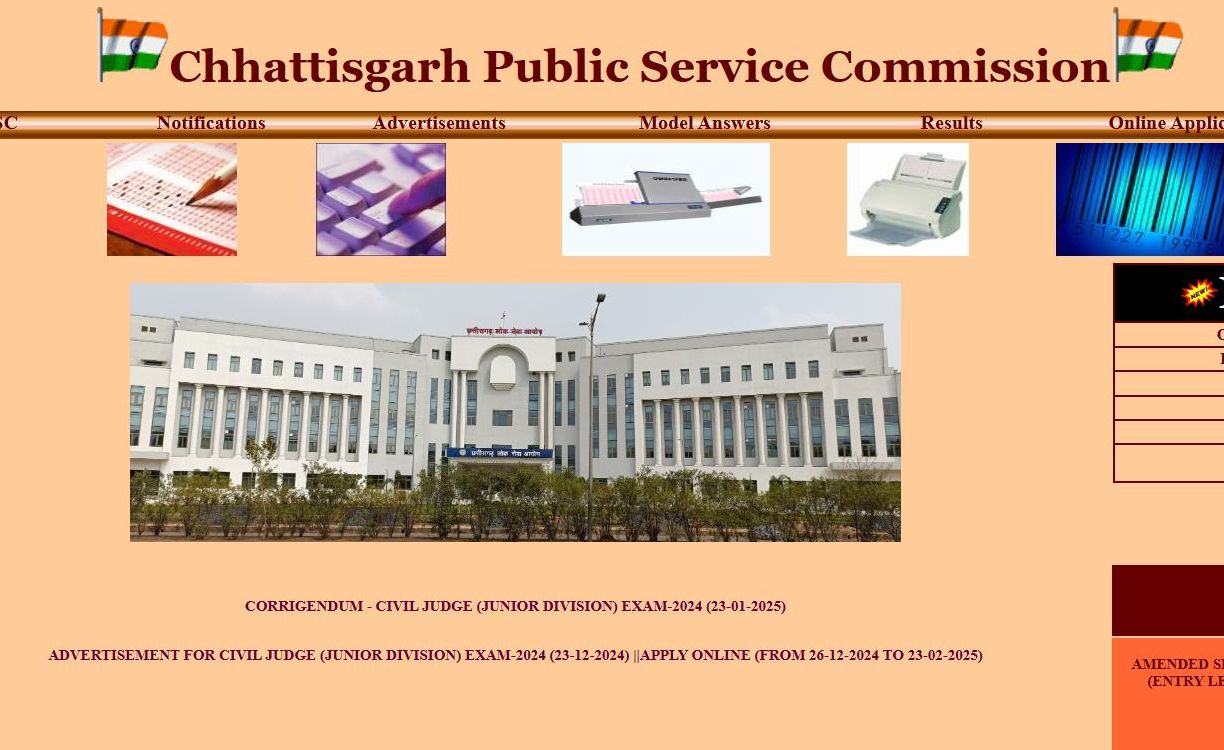
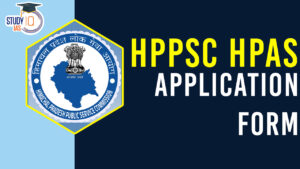 HPPSC HPAS Application Form 2025, Apply ...
HPPSC HPAS Application Form 2025, Apply ...
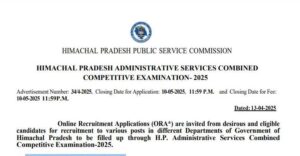 HPPSC Exam 2025: Notification, Eligibili...
HPPSC Exam 2025: Notification, Eligibili...
